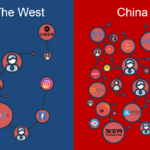Sensory analysis in China
It is easy for a market researcher to define if consumers like a product or do not like it. However, it is quite difficult to understand why.
This is probably because while most people accept or reject a product based on its sensory characteristics, they fail to distinguish one sensory characteristic from the others or to find the good word to describe it. The sensory analysis in China supports manufacturers and retailers of food, beverages, personal care products, household items and others which aim to enter China’s market. This methodology can help them get a better understanding of their new or existing products’ sensory properties among Chinese consumers.
Four sub-sections of Sensory analysis in China: effective testing, affective testing, perception and central location testing (CLT)
Effective testing in China
Effective testing, also known as sensory research, usually requires a trained panel. This type of testing is concerned with obtaining objective facts about products, could range from descriptive analysis to discrimination testing. A descriptive test provides word descriptions of products, a basis comparing product similarities and differences, and a basis for determining those sensory attributes that impact preferences while a discrimination test determines whether there is a detectable difference among two or more products. Descriptive tests are normally used to measure all perceived attributes of products or investigate the impact of ingredient or progress change on the final product. Methods for collection and statistical analysis of sensory data include QDA (quantitative descriptive analysis), free-choice profiling and GPA (generalized Procrustes analysis). QDA allows profiling products along with certain attributes in a very precise and replicable manner. Free-choice profiling determining the quality of a thing by having a large number of subjects experience it and then allowing them to describe the thing in their own words, as opposed to posing them a set of “yes-no-maybe” questions. GPA is one way to make sense of free-choice profiling, to compare the results of panels. The methods used in discrimination testing include paired-comparison test, duo-trio test and triangle test.
Affective testing in China
Affective testing, also known as consumer testing, usually recruits large panels of untrained personnel. This type of testing is concerned with obtaining subjective data about products, in other words, how well products are likely to be accepted. There are two mainly used methods for affective testing, paired comparison and hedonic scale. Acceptance testing has varied types, including laboratory testing, central location testing and in-home-use testing. Aside from the typical large panels for affective testing, there are also smaller focus groups. Focus groups provide great qualitative feedback regarding products as well as various topics, helps manufacturers gain insights into products.
Perception in China
Perception gives the biochemical and psychological evidence, explain the mechanism of people’s choice, helps manufacturers in the early stage of the development. QDA is also widely used in perception. They are several techniques employed to measure the intensity of sensory perceptions. The evaluation of products is a very large subject that involves analysis, designs and human senses. Daxue Consulting conducts sensory evaluations with the help of trained panels as well as non-trained panels. Daxue team has the capabilities to conduct sensory evaluation studies all around China, in Shanghai, Beijing and Tier-2 cities.
Central Location Testing (CLT)
Central location testing (CLT) is a qualitative market research approach, which takes place in a specific, controlled environment such as a shopping mall, restaurant, school, church, community center, hotel, testing lab or other suitable location. CLT is the practical way of implementing the survey which ensures high-quality results and offers key advantage of Face to Face interview which is assessed as the most suitable method for testing concepts, products, packaging, advertising effectiveness as well as conducting sensory research.
Central location testing market research approach offers researchers several key advantages vs. other approaches, such as home-user tests:
- Since the environment is controlled, the researcher can eliminate bias. For example, all participants can be shown a series of products in the same order, packaging, etc;
- Researchers can obtain candid “raw” feedback based not just on what participants say, but also by what they do not say, and what their body language conveys;
- Researchers can dig deeper by asking participants follow-up questions based on their reactions and responses.
With the help of sensory analysis in China, now it is easy to get exhaustive feedback of new products or the impact of change on the final products, compare one’s products to the competitor, even increase the shelf life of one product through the carefully matched methods.
To know more about business consultancy in China, please contact us.
Follow us on Facebook and Twitter to learn more:
Inside #China’s blossoming #wedding industry: https://t.co/65g6bZNFlt @weddingmarket @Weddingmagazine pic.twitter.com/0E64AQQFyC
— Daxue Consulting (@DaxueConsulting) November 22, 2017
















